A wood filler is one of the best tools to coverup any vacant damage on the wood furniture or walls. It is usually made of sawdust and glue, making it a reliable substance that can be easily painted or sanded to restore the look and smoothness. With the availability of a wide variety of wood fillers, it is bit tricky to choose among them. To make a reliable purchase, we recommend considering below factors…
- Type : The wood filler can be either water-based or solvent-based. You can choose between them based on their purpose of use.
Water-based fillers are made out of cellulose, gypsum or wood fiber that emits less odor and has water sensitive, which makes it suits mostly for indoor/interior projects. It quickly dries out and easy to clean up after its use. Solvent-based fillers are made of vinyl and epoxy composites that emit stronger smells but sticks (bond) strongly and weather resistance, which makes it suits best for outdoors/exterior projects. It won’t dry out and a bit difficult to clean up.
- Interior Vs. Exterior: Some wood fillers are designed to use for indoors (not weatherproof), while others are meant to use for both indoor and outdoor usage (weatherproof). So, make sure to check out whether your projects require the only interior (or) only exterior (or) both interior and exterior applications.
- Quantity: Fillers can’t be stored for a longer time, as a little air will make the whole container gets harder. So, purchase the required amount needed to complete your project. For instance, a professional woodworker has to choose powdered fillers that won’t dry or freeze (longer shelf life). A DIYer’s can choose a container or tub that comes with less quantity used to cover/fill cracks, claw marks or nail holes. Want to know more clearly about wood filler and how to purchase the best option? Then read on our below mentioned “Buying Guide” section. Also, you can find out the Best Wood Filler reviews below.
7 Best Wood Fillers Of 2023: Table
7 Best Wood Fillers Of 2023 Reviews
1. Bondo Wood Filler
First on our list is the Bondo 200082 Home Solutions Wood Filler. The Bondo wood filler is touted to be one of the highly rated, greatly reviewed and best selling wood fillers. This 1 Quart box contains high-quality wood filler that will help in the restoration of the small cracks and other issues you have with doors, windows, furniture or shutters etc., It is a beginner-friendly wood filler and thus its ease of use will make it a great pick for DIY projects, Hobbyists and even children learning basic repair skills as well It can further be shaped or sanded or drilled too (depending on the level of hardness or the time of dryness it has been after applied. Post it is fully dried, the wood filler is no more different than hardwood and seems like it replaces the wood completely. The filler begins to dry up immediately 15 minutes after application thus you need to act fast once it is out of the box and is ready to be applied else it would be waster. Things we liked about it
Comes in a large 1-quart container capacity thus is great for the long term through storage too. Beginner-friendly Has a multi-purpose use Easily shaped and drilled, sanded or even planed too once dry. Dries up very fast in just 15 minutes thus you need to be very fast in using it
Things we didn’t like about it:
Highly thick in nature thus once you are done with half bottle, the last 10% will be difficult to use.
2. Aqua Coat Wood Grain Filler
Aqua Coat is a low odour water-based wood grain filler. This clear gel is not only easy to use but also environmentally friendly and also highly reviewed and rated. Beginner friendly, the Aqua Coat grain filler can be used by just about anyone from DIY enthusiasts to professional contractors too. It can be used to fill in the grain, seal up wood pores, strain raw wood, get a better finish on porous woods and much more. It can even be used to smoothen the finish off tabletops, cabinets tools, millwork, pianos, millwork, guitar or other furniture as well. Not just for wood, but it can also be used for plastic or other similar viscous products as well. As the grain filler is waterborne and eco-friendly, it has a low VOC, almost negligible odour and it dries fast. It is non-flammable, non-combustible and gives you a beautiful finish once done. The filler can be mixed with other water-soluble dyes or pigments which makes it comfortable for you to use the dye for painting up things which have been filled thus they do not look odd and out of place. It takes about 45 minutes to 1 hour to dry up and it can be sanded lightly (with a 320 grip sandpaper or higher or even a Scotchbrite sanding pad too). This has to be done immediately after application. For better results, you can go for 2 or 3 coats on the finish. One quart can be useful to repair a whole kitchen of 30 or 40 drawers at a time. Things we liked about it
Water Soluble natural wood grain filler Low VOC No odour Easily mixable Eco-Friendly Can be printed, painted and more Gives you a great and smooth finish
Things we didn’t like about it
Can’t be heavily sanded Takes longer to dry
3. DAP 00585 Latex Wood Filler
The brand DAP is known for providing good quality adhesive products. This solvent-based wood filler is specially formulated to provide 3 times stronger repair than the wood. It is a professional and heavy-duty wood filler so it will last pretty long. It is filled with real wood fibers which look and acts similar to the wood. You can screw, stain, varnish, lacquer, sand or paint the filler once it is completely dried. It ensures strong nail and screw anchoring without causing any split. Once applied, the filler dries quickly and becomes shrink and crack-resistant. The filling is quite easy to use and doesn’t have any strong and unpleasant odor. Things we liked about it
Latex based formula Contains real wood fibers Looks and acts like real wood Easy to use Low odor Cleans up with water Dries up fast Shrink and crack resistant
Things we didn’t like it
Gives off greyish color after drying up
4. Famowood Wood Filler
FamoWood’s 40022126 latex wood filler is one of the best rated multi-purpose wood grain filler. This can be used on a single type of wood for both indoors and outdoors easily without any washing up fears. Versatile in its application, the wood filler can fill in voids of large or small sizes easily. The final construct made from the wood putty never caves in or cracks out. This wood grain filler can easily handle open green wood or any other forms of cracks easily. As it is solvent-free in nature, it can easily be cleaned up with water too. The best part about the wood grain is that it does not have any odour to it and will not cause you to cover your noses when using it. When filling up the voids and cracks, the unique wood colourization of the latex makes it convenient for any use and gives the end a pure wooden finish. Things we liked about it
High-quality putty for a great value of money Solvent-free make Does not shrink or crack at the end Quick-dry in 15 Minutes
Things we didn’t like about it:
A bit pricey
5. GoodfIlla Wood Filler
Last on our list, we have yet another water-based grain and wood filler. The Goodfilla wood filler putty is of walnut colouring and comes with a great set of reviews and ratings and a warranty period/ money-back window as well. While most of the fillers mentioned in the list are beginner-friendly, this one is built for pros and for large grade repairs and patchwork. The wood filler can easily dry out and can also be removed easily as well. All you need to do is splash some water and scrub it out. Even after the filler is applied and cured, it can absorb good amount of water and this might cause some issues in humidity. Thus it is not so suggested for outdoor usage. But at the same time, it can resist good temperature changes and this makes it an all season long indoor project worthy. So strong is the bond that the filler can hold up a large screw onto it without movie as well. Such is the confidence for the company that they give you a 1-year money-back guarantee from the date of purchase as well. Things we liked about it
Water-based solvent-free grain Easily applicable and easy to remove as well. Great hold that it can even hold up a screw or a nail Has a 365 days (1 year) money-back guarantee as well
Things we didn’t like about it:
Can’t hold up against humidity thus is only good for indoor projects
6. Minwax Wood Filler
Next up on the list is the Minwax 21600000, a high-performance wood filler of epoxy make and composition. The strength of Minwax is known to even hold a large screw or a nail in its place once the filler dries up too. The maximized strength of the filler makes it ideal for being used not just for indoor jobs, but also for outdoor jobs as well because of not just its strength but also for its highly water-resistant nature as well. Minwax wood fillers are available in a wide range of colour schemes and shades to choose from. This essentially eliminates the need to paint over the wood filler when you are using it over something that requires painting. Very quick in its drying time, the wood filler works just like epoxy glue. It comes in the two-part mixture. The wood filler comes with a hardener in the package that allows for a perfect mixture but due to the high thickness, maybe a bit hard to mix. After mixing, you can apply it not just for wood, but a wide range of metal, plastic, ceramics, fibreglass, wood-based or other materials with great ease. After application, it can set in to dry in just about 15 minutes and in about 30 minutes, the material is good enough for sanding as well. Things we liked about it
Available in many shades and colours to choose from Quick to dry No cracks or shrink issues The very hard setting thus can be used to hold together screws and nails too Can bond with almost anything
Things we didn’t like about it
Though quick in drying, it does not leave a lot of time window after mixing it 2 Part mixing can be a bit cumbersome A bit expensive in nature
7. Elmer’s Wood Filler
Elmer‘s E913 Carpenter’s Wood Filler adheres to its name to be a colour changing wood filler. This natural wood filler is a highly rated product that arrives in a package of 8 ounces or 16 ounces tub. It can easily be used to lock up voids and cover up holes all over the indoors. These include furniture dents, chair repairs or wallboard. The patented formula used in this paste will change its colour to indicate its state of affairs. For instance, the paste of the wood filler is purple in colour when it is freshly applied. As soon as it begins to dry, the colour of the filler will turn into white. Quick in drying, the wood filler takes about 15 minutes tops to dry up completely for minor tasks. If you are using the filler for deep voids or large dents, then you will have to wait for about 2 or 6 to 8 hours before the area is completely dry and ready to use. This Wood filler Putty can be sanded, painted and can also be stained once the mixture is completely dry. Used mostly for light purposes, as mentioned, this putty is good enough only for internal usage. Things we liked about it
Beginner friendly and can be easily used by anyone. Available in 8 ounces, 4 ounces and 16-ounce tubs Stainable, printable, paintable and sandable post drying. Patented non-toxic formula Naturally dries quickly in just 15 minutes Changes colour from purple to white (when fresh to completely dried)
Things we didn’t like about it
The putty make require a longer time to dry out when used for deep voids or large dents A tad bit expensive pricetag
Buying Guide: How To Choose a Good Quality Wood Filler?
Here are some essential features that you have to consider while purchasing the wood filler. This helps you in selecting the best one, as per your requirement. Check out these factors before making its purchase.
1. Solvent Vs. Water Wood Fillers:
Wood fillers can be either water-based or solvent-based. Though there is a lot of difference in them, you can use anyone to fill the wood voids or pores. Let’s know about them in detail.
Water-Based Wood Fillers:
This type of wood fillers is comprised of gypsum, wood fibre, or cellulose. They emit a few volatile organic compounds (VOCs), which makes them possess a less powerful odor. As the name implies, these water-based wood fillers get instantly diluted with water and can be used in various projects, which requires thinner filler. They are mostly water-sensitive and can be used mostly for dry areas, like interior projects. It allows you to manipulate them into thick layers or thin layers depending on the case. This feature makes it more versatile compared to solvent-based fillers. It gets dry in about 15 minutes and you need soap and water for cleaning it after use.
Solvent-Based Wood Fillers:
Solvent-based wood fillers contain epoxy or vinyl in their make. With their higher VOC content, they tend to be smellier. They will give you a stronger hold and bond. This type of wood fillers takes a bit longer time, as an hour to dry up. Also, use either turpentine or acetone for its cleaning after use. Solvent-based filler is more resistant to humidity, water, rot, and extreme cold and heat, which makes it a great option for exterior wood applications or projects. Also, these are expensive than water-based fillers.
2. Task:
Usually, wood fillers are formulated to perform either a single or more specific tasks. For instance, a few are used to fill voids like holes, gouges, or divots in wood species. While others are used for filling pores (especially large pores) in open-grain woods like elm or oak to smoothen its coarse texture naturally. Here the filler overwhelms the pores evenly to attain a perfectly desired finish on your furniture. Some versatile wood fillers are formulated to fill both pores and voids.
3. Indoor Vs Outdoor Use:
We generally notice the fillers are labelled as interior only (or) interior/exterior (or) exterior only use. This indicates how effectively a filler can hold up in the stated environment like during application, post-application (after it dried), and while wet. So, use the fillers as per the indications it has on the pack. You have to apply interior-only fillers on indoor wooden pieces like a coffee table. If you apply this interior filler on any outdoor wood furniture like a patio table, then the filler gets freeze or harden when wet due to its exposure to extreme heat or cold. Thereby shrink or crack after some time once it gets dried completely. The interior/exterior fillers can let you apply them in any environment to wood pieces either on indoors or outdoors. As they are formulated to withstand extreme weather by not getting hardening while the application (or) crack/shrink after they dry. Water-based exterior/interior fillers are durable and hold best for outdoor projects that make them more versatile. Also, it won’t emit odor when it is wet or dry. Coming to solvent-based fillers, you can safely apply them in both environments and considered best for heavy-duty outdoor projects (like to fill gouges or replace rot decking). The highly weather-resistant solvents will defend against various elements and emit fumes when wet to dissolve in the air quickly.
4. Consistency:
The consistency of wood fillers matters most. A few fillers offer thin (pancake batter-like) or thick (or putty-like) consistencies. Generally, thinner fillers are used to fill pores in open-grain woods, whereas thicker fillers are used for filling voids. It is essential to choose the perfect consistency required for your project. The thinner fillers lack the body to fill voids adequately, whereas thicker fillers have large particles that won’t fit properly into the pores of open-grain woods. A few thicker fillers are thinned with water to fill these pores.
5. Ingredients:
However, different ingredients are used in the manufacturing of wood fillers, in which one has to check it out before its purchase. If the wood fillers are made with wood fiber, then it is not hard enough to be sanded, which is the main issue experienced by most people. In case, if it is hard, we can’t curve on it. If your wood filler has wood grain, then it becomes wood after it gets dried. It let you paint, sand, curve, or stain anything you desires. A few manufacturers use adhesive properties in wood filler making to make it sticky, which exhibits both pros and cons. Forming a highly strong bond is the main benefit we grab from filler having adhesive properties. While the main flaw is that they are unable to go into a deep hole and won’t be stored for a long time. So, it all depends on your personal preference. Choose this adhesive property filler to fill a small hole not yet to fill a big/large one.
6. Color:
In general, the color of most wood fillers will be either white or wood-inspired shades. Also, a few are available in clear versions that are used to fill the pores. Go with a filler in a shade that contrasts or matches with the original wood color when you won’t plan to paint or stain the wood piece. In case, if you intended to coat the filler with paint or stain, then look for a paintable/stainable product having a white or shade lighter than the paint or stain, which you are using. So, color your wood piece with your desired & matching shades of wood fillers.
7. Drying Time:
Based on the composition of a given wood filler, its drying time varies. Latex, water-based or cellulose wood fillers get quickly dried in 15 – 30 minutes. While, Epoxy fillers may take around 30 – 40 minutes (or even 2 hours) to get dry completely. Want to fix the workpiece quickly, then it is ideal to choose the filler having a fast-drying time. In case, want to make some adjustments to the workpiece, then go with a longer dry time that suits best for you.
8. Quantity:
A wood filler in a bulk package is the best option for a professional woodworker. The containers or tubes possess little product that used to cover things beyond broken edges, cracks, or gouges in the wooden trim. Looking to fill small cracks, claw marks, or nail holes, then you need a filler with a small quantity of 4 – 16 ounces is enough. While for household tasks such as fixing a broken object or a windowpane, you should go with a bit bigger container of 30 oz. quantity. If you want a huge quantity of wood filler for professional work, then choose powdered fillers that come in larger bags of about 10 – 15 pounds, as these wood fillers won’t dry or freeze and thereby offers a longer shelf life. It is considered the best filler for fixing large holes and allowing you to do your job without spending much quantity. Remember that we can’t store the fillers properly. The reason is that the entire container of filler becomes hard with a little amount of airflow. So, make sure to buy the required quantity of filler without wasting your money. Simply to say, buy the filler whenever needed without storing it much.
9. Paste Vs Powder:
It depends on one’s personal preference and project requirement. Here the paste comes in a ready to use mixture than powered form filler. Yet powdered fillers provide you with the freedom to use the quantity required for your pursuing project. However, the paste filler is easy to apply but it will dry out in the box, if not used/stored for a longer time. While a powder filler will let you mix a small or large quantity without getting any worry about wasting the remaining quantity of the product, as they won’t dry out even if kept idle on the shelf. Consider the magnitude of the project that you are dealing with to make proper use of the filler. Looking to fix small cracks or holes, then you need a small filler paste tube. It suits perfectly for this type of applications. Whereas dealing with commercial tasks, you can go with a bulk powdered package to perform your task.
10. Packaging:
Usually, these wood fillers are packed in squeeze tubes, tubs, and sticks.
The fillers in tubs come in two variations. The one that is applied directly by using a putty knife or spreader, whereas the other two-part fillers have to be mixed before its application. The tube fillers will allow you to squeeze out the required amount to fill the pores or voids. For stick fillers, you can rip off a small portion of the filler and apply it by hand.
Among these three types of packages, tubs considered the most economical and can be used for larger projects (as they hold most product). The tube fillers set in the middle range that mostly used for household purpose. While sticks are affordable and can be widely used to repair cracks and scratches. So, for best results, use them as per your purpose and requirement without wasting your money and product.
Types of Wood Fillers:
Generally, wood fillers come in various forms. Here we let you know some most common types of wood fillers. Have a look at them.
1. Cellulose–Based Wood Filler:
This filler has wood fibers and binders that come as a dry mixable paste. It dries out quickly and has a low odor and anti-shrinking properties, which makes it an excellent option to use both outdoors and indoors, yet it is stained while applying.
2. Gypsum–Based Wood Filler:
This type of filler contains mineral powders and offers superior bonding properties. For its application, you have to mix it with water till you get the right consistency. The main drawback of this filler is that, it is not weatherproof, which makes it to use them only indoors. Based on the consistency of the filler and the gouge or hole required to fill, its final curing or drying time varies.
3. Latex Wood Filler:
The most popular type of filler that widely used by both professional and home woodworkers. It spreads and sets quickly in around 15 minutes, which makes it a perfect option for both outdoor and indoor projects. It resembles-like real wood and used to repair holes, gouges, cracks, and other surface defects on the cabinets, furniture, plywood, doors, panelling, woodwork, windows, and molding.
4. Epoxy Wood Fillers:
The epoxy filler will firmly bind onto the surface and thereby spread properly to form a missing wood chunk. With its excellent features, it mimics wood like they are painted, stained, or drilled into. Also, it will saw, sand and shape the wood piece. It appears as a little plastic, which makes it look different from other types, yet considered a good paint.
5. Vinyl Wood Filler:
Are you a beginner and looking for an easy to apply wood filler? Then this filler is your best option, as it is soft, flexible, and easy to apply on the surface. You can easily fix/set this filler into the crack or hole but it may often crack whenever you place a thick layer of this filler. For this reason, it is not considered the best option by most people. Looking to do a thin coating over the woods, then this vinyl filler is considered the best. It is a plastic-based solution and water- and UV rays-resistance will make it an excellent option to use on exterior wood pieces. It won’t stain but most experts suggest painting over it on a safer side to prevent it from cracking or peel-off.
Wood Putty Vs. Wood Filler:
Did you ever use a wood filler before yet? If not, you will be confused by this filler with wood putty. Also, some people may use one type instead of using another one. Let’s know about these two types, in brief, to know where to use them for the best results. Wood Putty – Wood putty comprised of calcium carbonate and oil compound that let you use only the oil-based finishes. It is not as versatile and takes a longer time to set compared to wood filler. With its excellent weather resistance, this putty suits perfect for outdoor applications. It is cost-effective as well. So, choose this wood putty when you are dealing with large wooden floor projects, as it works well and cheaper than wood fillers. Wood Fillers – Wood filler works well in dealing with any type of wood blemish, scratch, rot, gouge, or hole. They easily spread over wooden surfaces and set quickly. Also, its drying/curing time is short compared to wood putty. With all these features, the wood fillers come in handy as a great option for looking to fix, heal, smooth, and cover wood flaws.
How to use a Wood Filler:
It is simple and easy to apply the wood fillers, yet its process involves various steps. All those are mentioned here. Since it is a filler, you have to use it immediately after opening it. So, time is precious and you have to keep everything ready like solvents, putty knife, filler, and a putty spatula before starting the process. Let’s get into the process of applying filler properly on a wooden piece.
To ensure tight bonding, you have to sand down the surface thoroughly. Prepare the wood filler before applying it. For this, mix well the filler (of your choice) with the right solvent by using a putty spatula till you achieve proper consistency. Look for a malleable and consistent substance suitable for the task. In case, if it is too thick, it will not fit properly and may crack, while if it is too thin, it will not cure/dry well. Generally, most fillers get quickly harden, which means you have less time for preparing the filler and applying it to the wooden piece. Apply this filler with a putty knife on the surface in the correct amount and never use any pressure on the filler. Allow it to soak into the cracks or holes naturally. Leave it till the filled wood gets dried completely. Remove any excess filler and smooth the rough edges to give the surface proper sanding. If needed, apply stain or paint properly to make it look attractive.
Pro Tip – Give enough time for a filler to dry properly irrespective of the time provided on a particular package. For best results, leave 24 hours/a day after applying this filler and thus bond up properly with the wood and thereby prevent any cracks/breaks.
Wood Fillers – Applications & Benefits:
We use different types of wood fillers for various applications. Have a look at some of its benefits, which we grab by using these wood fillers. Clean-Up: If wood surfaces get exposed to an open environment, then they become dirty. So, to clean them effectively, use water-based fillers to clean the wood safely without damaging any coating or texture. Smoothing Pores: Applying a thin filler layer will smoothen the rough surfaces and coarse wood grain. When once it set properly, then a good polish will do the rest. We usually do this as regular wood maintenance work to maintain the furniture look in its best form. Covering Scratches: Quite useful for those having pets, which makes the wood furniture have a few bite or claw marks. Applying this filler will cover and remove those scratches. Filling Holes: Choose a 2-part epoxy filler to fill the holes, as this filler bond up with the wood to make its uniform structure and thus looks perfect after proper staining or sanding. Fixing Rotten Wood: Here, the plastic wood fillers come in handy. They work best to cover the rotten parts and hold a screw as well.
Conclusion
Out of all the mentioned in the list, the Bondo Wood Filler is the best pick of the lot. This 1 Quart bucket of wood filler putty has some of the highest reviews and ratings. It can be used not only for restoring small wood or furniture cracks but also can be sanded, painted or drilled later. This makes it a great addition to your DIY kit. The putty dries in just about 15 minutes of application and it makes it the best wood filler to buy.
While those were our choices, we would like to hear it from you. Did you like our list or did you feel like we could have added or removed anything from it? If so, feel free to write to us in the comments section below and our team will write back to you as soon as possible. Comment * Name * Email * Website
Δ



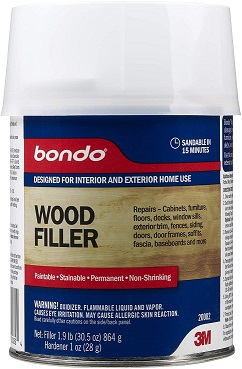
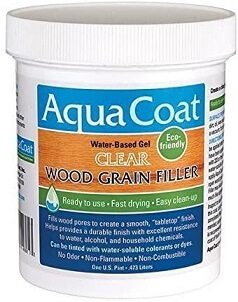
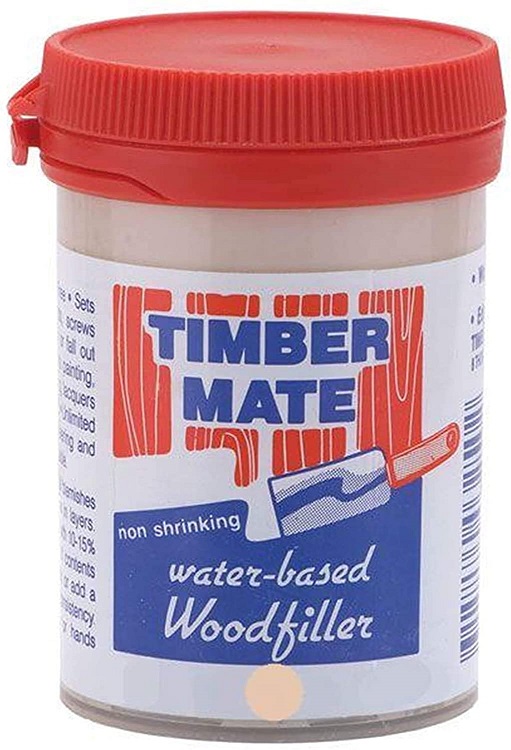
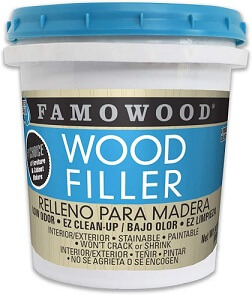
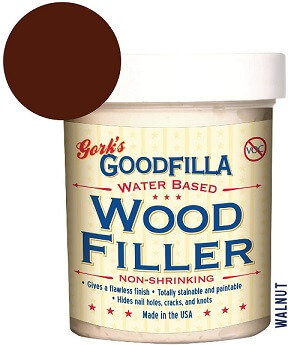
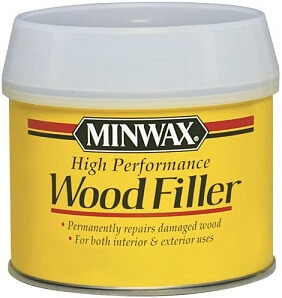
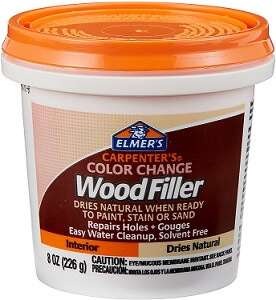


![]()